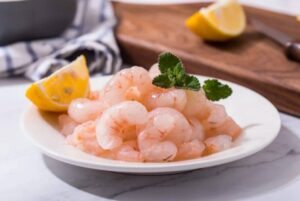Are you looking for a humectant for your food processing business? Looking no further, here it is. Disodium Dihydrogen Diphosphate functioning as a humectant can handle your problem very well.
 Before delving into Disodium Dihydrogen Diphosphate’s humectant function, let’s unravel the concept of humectants. Humectants are substances that possess a unique ability to retain and balance moisture content. They are akin to moisture regulators, ensuring that the delicate equilibrium between wetness and dryness in various food items is maintained. This property is what grants humectants their remarkable capacity to keep foods moist, tender, and palatable.
Before delving into Disodium Dihydrogen Diphosphate’s humectant function, let’s unravel the concept of humectants. Humectants are substances that possess a unique ability to retain and balance moisture content. They are akin to moisture regulators, ensuring that the delicate equilibrium between wetness and dryness in various food items is maintained. This property is what grants humectants their remarkable capacity to keep foods moist, tender, and palatable.
What is Disodium Dihydrogen Diphosphate?
Disodium Dihydrogen Diphosphate abbreviated as SAPP, is often referred to as disodium pyrophosphate or sodium acid pyrophosphate. It is a white, water-soluble inorganic compound. As a salt, it has a range of applications in food processing. Its E number is E450(i), classifying it as a food additive approved for use in many countries.
When introduced to food products, it acts as a humectant, preventing items from becoming overly dry or excessively moist. This is particularly crucial in the realm of baking, where maintaining the ideal texture of baked goods can make the difference between a delectable treat and a lackluster creation.
What’s the Mechanism of DIsodium Dihydrogen Diphosphate Humectant?
Hygroscopicity: The Molecular Tug-of-War
Central to the humectant’s role is its hygroscopic nature. This property, exhibited by compounds like Disodium Dihydrogen Diphosphate, shows a strong attraction to water molecules. When introduced to food, Disodium Dihydrogen Diphosphate’s structure triggers a molecular tug-of-war, drawing water in through hydrogen bonding and forming an adherent layer.
Monolayer Formation: Shielding Effect
This cluster of water molecules creates a monolayer—a single molecule sheet covering Disodium Dihydrogen Diphosphate’s surface. This shield safeguards water from evaporating into the surroundings, establishing a delicate balance that maintains moisture in the food.
Enhancing the Colloidal Network
Disodium Dihydrogen Diphosphate’s influence goes beyond monolayers. In foods with complex colloidal structures like dough, Disodium Dihydrogen Diphosphate interacts with proteins and starches, optimizing water retention. This improves dough extensibility, aiding in rising during baking for a softer, moister end product.
Thermodynamic Balance: Crystallization Prevention
Disodium Dihydrogen Diphosphate’s effects are also thermodynamic. In systems with sugar, like confectioneries, Disodium Dihydrogen Diphosphate prevents sugar crystallization. This disruption preserves the liquid state, ensuring a smoother texture and preventing undesirable dryness.
What Foods Require Disodium Dihydrogen Diphosphate Humectant?
- Processed Meat Products: To retain moisture and prevent drying out, leading to a less palatable texture and potentially shorter shelf life, especially in products like sausages and deli meats.
- Canned Seafood: Helps in maintaining the texture and moisture content of seafood, ensuring it doesn’t become too dry or tough after processing.
- Baked Goods: Such as cakes, muffins, and certain breads. It assists in keeping these products soft instead of dry or crumbly and extends their shelf life.
- Frozen Foods: Including frozen pizzas and ready-to-cook meals. The compound helps prevent freezer burn and maintains the texture of the food.
- Dairy Products: Especially in items like processed cheese, to maintain a consistent texture and prevent separation.
- Potato-based Products: Found in items like instant mashed potatoes or certain potato snacks to retain their texture and moisture content.
- Desserts and Puddings: Assists in achieving a smooth, creamy consistency and preventing them from drying out.
- Beverages: In certain powdered drink mixes, ensure they dissolve well when mixed with water or milk.
- Processed Vegetables: Such as those in canned or jarred form. Helps in retaining the natural texture and moisture of the veggies.
- Dried Fruits: While not as common, it can be used in some dried fruits to maintain a certain level of chewiness and prevent them from becoming overly dry.
Overall, in the vast realm of food additives, Disodium Dihydrogen Diphosphate stands out due to its humectant properties. Its ability to retain moisture, extend shelf-life, and enhance the texture and appearance of foods makes it a preferred choice among food manufacturers. Contact us through [email protected] to get more information on disodium dihydrogen diphosphate humectant, we’re looking forward to hearing from you.




